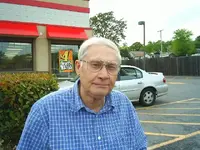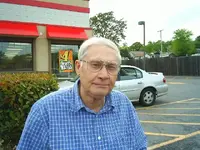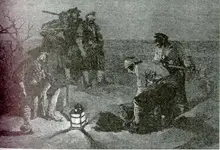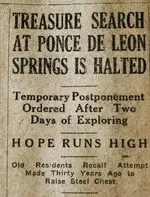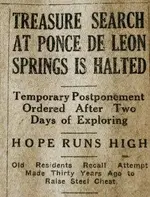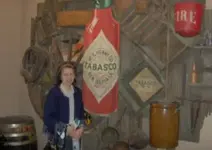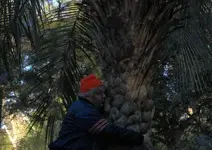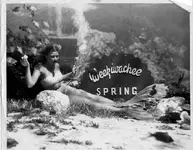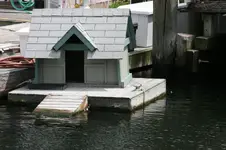You are using an out of date browser. It may not display this or other websites correctly.
You should upgrade or use an alternative browser.
You should upgrade or use an alternative browser.
Florida Hunt:
- Thread starter Bridge End Farm
- Start date
Burdie
Gold Member
- Joined
- Nov 13, 2005
- Messages
- 5,587
- Reaction score
- 89
- Golden Thread
- 0
- Location
- South Central Kansas
- Detector(s) used
- Etrac
- Primary Interest:
- All Treasure Hunting
Re: Florida Hunt (contest #1 posted on post 439)
Did I mention that I was looking to share a room.

 Bad idea.
Bad idea.
Burdie
Did I mention that I was looking to share a room.


 Bad idea.
Bad idea.Burdie
Mental Granny
Gold Member
- Joined
- May 8, 2005
- Messages
- 10,072
- Reaction score
- 115
- Golden Thread
- 0
- Location
- Cherokee Strip
- Detector(s) used
- Cibola
- Primary Interest:
- All Treasure Hunting
Re: Florida Hunt (contest #1 posted on post 439)
Thats what I thought when I saw it too!
Ok I was just reminded about the pics of everyone ans saw I did not put names on some my bad so I treied to go back and add them my puter keeps shutin me out so I am just goin list them here it is the best I can do and thankfully there arent to many some have names or a comment by them and one i didnot post but I want everyone to know who is who!
So if you dont have a pic on t-net please post one! Or if you do and I dont post it soon please let me know where it is at!
So far ...... Page 4
Olegoat ---posted by him
Mr. & Mrs. Cheesecake Hunk
Mr. & Mrs Juanmoretime
Page 5 Sassy Beagle / Hunt Misstress
BEF / He hangs out with her
cwdigger
dragon6KY
cynangel
burdie
cybercop6
bigfoot Okie .....name chage was Treasure hunter
Shane
Angela .... his lovely wife
Godisnum1
Ashlee1228
And I pre apolgize if I miss spelled or did not cap. right on some t-net names, so forgive me
Thats what I thought when I saw it too!
Ok I was just reminded about the pics of everyone ans saw I did not put names on some my bad so I treied to go back and add them my puter keeps shutin me out so I am just goin list them here it is the best I can do and thankfully there arent to many some have names or a comment by them and one i didnot post but I want everyone to know who is who!
So if you dont have a pic on t-net please post one! Or if you do and I dont post it soon please let me know where it is at!
So far ...... Page 4
Olegoat ---posted by him
Mr. & Mrs. Cheesecake Hunk
Mr. & Mrs Juanmoretime
Page 5 Sassy Beagle / Hunt Misstress
BEF / He hangs out with her
cwdigger
dragon6KY
cynangel
burdie
cybercop6
bigfoot Okie .....name chage was Treasure hunter
Shane
Angela .... his lovely wife
Godisnum1
Ashlee1228
And I pre apolgize if I miss spelled or did not cap. right on some t-net names, so forgive me

Mental Granny
Gold Member
- Joined
- May 8, 2005
- Messages
- 10,072
- Reaction score
- 115
- Golden Thread
- 0
- Location
- Cherokee Strip
- Detector(s) used
- Cibola
- Primary Interest:
- All Treasure Hunting
- Joined
- Jan 6, 2006
- Messages
- 20,844
- Reaction score
- 2,534
- Golden Thread
- 0
- Location
- SE Louisiana
- 🏆 Honorable Mentions:
- 1
- Detector(s) used
- Garrett AT Pro, Ace 250 & Ace 400
- Primary Interest:
- All Treasure Hunting
Re: Florida Hunt (contest #1 posted on post 439)
Dis & Dat...Florida's Fabulous Treasures
Below, are listed some major treasure locations in Florida.
• The most notorious and successful pirate was Jose Gaspar, better known as Gasparilla. His methods were black and bloody, and he stands out among all the pirates who used Florida to bury their wealth. Leaving Spain at an early age, he sailed to the West Coast of Florida. He soon picked a good spot in Charlotte Harbor, and began to build his pirate kingdom. His headquarters were at Boca Grande, on what is today known as Gasparilla Island. In the following years, he accumulated a board estimated at $30,000,000. It is said that he and his brother buried all of his money on the islands in and around Charlotte Harbor. In all, he buried 13 casks and chests of treasure in the vicinity of his headquarters. His men, who numbered in the hundreds, also buried their smaller caches on these islands.
All had been going along fine for Gasparilla until the year 1822. The American Government then decided to get into the act and sent a Navy squadron to end his career. One day Gasparilla prepared to attack a merchantman, but to his surprise, it turned out to be a United States man-of-war. When he finally realized that it was a warship, it was too late. The notorious pirate then committed suicide by wrapping a heavy chain around him and jumping over the side. His ship soon followed him to the watery depths. The ship contained $1,000,000 in assorted treasure, and should be there today. Charlotte Harbor is an ideal spot to go treasure hunting. Just pick any island and start digging, because Gasparilla’s loot is buried on many of them, including Cayo Pelau.
• For many years, there lived in a cabin on Shell Creek an old Spaniard named Juan Gonzalez (not to be confused with Juan Gomez). He claimed that he had pirated with Gasparilla and knew where the famous pirate had buried one of his treasure casks. He said, “that it was buried near the shore of Lettuce Lake,” (this is near Ft. Ogden, Florida) and “that it is worth several million dollars.” Shortly after the Civil War Gonzalez made a deal with two cattlemen to dig up the cask. When the two men went to Gonzalez’ cabin with a skiff on an oxcart as per agreement, he was too sick to go. When they returned a few days later, they found him lying on the floor, dead. After he was buried, they searched his cabin. All they found was a jar full of gold coins and an engraved copper chart. This engraving may be the key to the buried treasure, but nobody has ever been able to decipher it. (I have seen a picture of the copper chart myself, and it seems to be authentic.) Whoever deciphers the engraving correctly (text only) will be a few million dollars richer. This is one of the most interesting pirate treasures in Florida.
• In 1864, a U.S. gunboat chased a Confederate ship up the Suwannee River. As the Confederate vessel rounded the second bend of the river, the crew rolled off kegs of gold coins to prevent their capture by the Union gunboat.
• Apalachicola Bay... A Confederate blockade runner went down in the bay north of St. George Island, carrying $500,000 in silver bars and many Spanish coins.
• Steinhatchee River... Three Civil War treasures are buried along the Steinhatchee River, which empties into Dead Man Bay in Taylor County. A Confederate blockade-runner chased by a Union ship was scuttled at the mouth of the river. The crew buried $500,000 in silver close by. Another blockade-runner hiding near the mouth of the river buried $140,000 in gold coins when a Federal gunboat appeared. After the war, members of the crew returned to claim the money, but were unable to find the location because a flood had taken away the markers along the bank of the river. Union Soldiers buried a cache of gold coins five miles from the mouth of the river.
• On the northwestern coast of Florida is the site of Billy Bowlegs’ hoard. He was believed to be one of Lafitte’s top men and for some time lived near New Orleans. After the Battle of New Orleans, he cut his ties with Lafitte and set out on his own. Moving to Santa Rosa Island near Pensacola, he started his own pirate kingdom. After accumulating much treasure, he decided to bury it. Thus, on a small island in Santa Rosa Sound, he buried most of his gold and silver bars. Nearby on the mainland, he deposited the bulk of his coins. In the hold of his ship was another million dollars in miscellaneous loot. This ship was later sunk, and has never been recovered. Billy Bowlegs’ treasure awaits discovery by some very lucky finder.
• The pirate Louis Aury is said to have buried several chests near a freshwater spring located on a small bluff in Clearwater Bay. While operating out of the northern end of Anclote Key, Aury was alleged to have buried loot on the Anclote River as well as on Honeymoon Island and Seahorse Key. In 1817, after taking over Amelia Island, he was known to have secreted a chest containing an estimated $60,000 in treasure. After surrendering to U.S. forces, he was given only 24 hours to leave the island, and was unable to retrieve this hoard.
• Amelia Island lies on the northeastern coast of Florida and pirate treasure almost grows on trees there. Blackbeard, Kidd, Lafitte and Aury have at one time or another used this island as their center of operations. Approximately $170,000 in treasures has already been found, but this is only a small portion compared to what is still buried. This is a very attractive island for the treasure hunter.
• Ex-pirate Juan Gomez lived on Panther Key, until the ripe old age of 120. On numerous occasions he claimed that lumps of melted gold were hidden under the roots of a tree on the island. (This island is also in the Everglades National Park.)
• Another of Gasparilla’s undiscovered treasures, amounting to several thousand dollars, was buried on Anastasia Island, south of Matanzas Inlet. The site was recorded as being a three-hour walk south of St. Augustine. It has been stated that he never returned for the chest.
• A map in the Spanish Archives shows a large chest from a wrecked ship was buried in the mid-1600’s somewhere in the Murdock Point area on Cayo Costa Island. Located some 100' from the Gulf of Mexico, the Spanish were unable to locate the chest. Also, in Boca Grande Pass on the north end of Cayo Costa an American frigate with $3,000,000 in minted U.S. gold coins sank in 1823.
• There were reports that when they were first dredging the Venice Inlet, a shipwreck was struck with the clam bucket dredge and gold coins were being picked up from the sand piles. A scan of old newspapers might confirm this story.
• After tropical storms, Spanish coins have been washing up on the beach at Stump Pass, just SW of Grove City. The dates are running from l754-l762, and the coins are in good condition. A gold 8 Escudo with a similar date was recovered in the water from the same area.
• Spanish gold coins were found on the beach at Longboat Key near Sarasota, after a dredger pumped in sand from off-shore.
• The area south of the Hillsboro Inlet to the Pompano Beach Pier has yielded artifacts over the years. Cob coins and a 17th-century Spanish cannon have been found here. There are many stories of gold and silver coins having been found here in the 1950's. The coins may have come from one of the 1715 Fleet vessels, or possibly from a vessel that had salvaged the fleet and was returning to Havana. Recently a dredge at the inlet has dredged up coins from the 1715 period.
• Boca Raton, located south of Palm Beach, is the site of two separate treasures. Blackbeard buried $2,000 in casks near the Boca Raton Inlet. These casks may be in submerged caverns. When a Spanish galleon was wrecked near here, the surviving seamen saved a large chest and buried it on the beach at Boca Raton.
• The members of the Ashley gang were notorious bank robbers who terrorized the citizens of Florida, during the early part of the 20th century. They succeeded in stealing over $100,000 in cash and it is believed buried near their headquarters. This was near Canal Point at the southern tip of Lake Okeechobee. All the members of the gang were shot to death, but their loot has never been found.
• DeLeon Springs is the location of a treasure chest lost by unknown persons. In the 1890’s, a chest was seen on the bottom of Ponce deLeon Springs. It soon fell into one of the submerged caves and could not be recovered. The chest has eluded divers ever since.
Dis & Dat...Florida's Fabulous Treasures
Below, are listed some major treasure locations in Florida.
• The most notorious and successful pirate was Jose Gaspar, better known as Gasparilla. His methods were black and bloody, and he stands out among all the pirates who used Florida to bury their wealth. Leaving Spain at an early age, he sailed to the West Coast of Florida. He soon picked a good spot in Charlotte Harbor, and began to build his pirate kingdom. His headquarters were at Boca Grande, on what is today known as Gasparilla Island. In the following years, he accumulated a board estimated at $30,000,000. It is said that he and his brother buried all of his money on the islands in and around Charlotte Harbor. In all, he buried 13 casks and chests of treasure in the vicinity of his headquarters. His men, who numbered in the hundreds, also buried their smaller caches on these islands.
All had been going along fine for Gasparilla until the year 1822. The American Government then decided to get into the act and sent a Navy squadron to end his career. One day Gasparilla prepared to attack a merchantman, but to his surprise, it turned out to be a United States man-of-war. When he finally realized that it was a warship, it was too late. The notorious pirate then committed suicide by wrapping a heavy chain around him and jumping over the side. His ship soon followed him to the watery depths. The ship contained $1,000,000 in assorted treasure, and should be there today. Charlotte Harbor is an ideal spot to go treasure hunting. Just pick any island and start digging, because Gasparilla’s loot is buried on many of them, including Cayo Pelau.
• For many years, there lived in a cabin on Shell Creek an old Spaniard named Juan Gonzalez (not to be confused with Juan Gomez). He claimed that he had pirated with Gasparilla and knew where the famous pirate had buried one of his treasure casks. He said, “that it was buried near the shore of Lettuce Lake,” (this is near Ft. Ogden, Florida) and “that it is worth several million dollars.” Shortly after the Civil War Gonzalez made a deal with two cattlemen to dig up the cask. When the two men went to Gonzalez’ cabin with a skiff on an oxcart as per agreement, he was too sick to go. When they returned a few days later, they found him lying on the floor, dead. After he was buried, they searched his cabin. All they found was a jar full of gold coins and an engraved copper chart. This engraving may be the key to the buried treasure, but nobody has ever been able to decipher it. (I have seen a picture of the copper chart myself, and it seems to be authentic.) Whoever deciphers the engraving correctly (text only) will be a few million dollars richer. This is one of the most interesting pirate treasures in Florida.
• In 1864, a U.S. gunboat chased a Confederate ship up the Suwannee River. As the Confederate vessel rounded the second bend of the river, the crew rolled off kegs of gold coins to prevent their capture by the Union gunboat.
• Apalachicola Bay... A Confederate blockade runner went down in the bay north of St. George Island, carrying $500,000 in silver bars and many Spanish coins.
• Steinhatchee River... Three Civil War treasures are buried along the Steinhatchee River, which empties into Dead Man Bay in Taylor County. A Confederate blockade-runner chased by a Union ship was scuttled at the mouth of the river. The crew buried $500,000 in silver close by. Another blockade-runner hiding near the mouth of the river buried $140,000 in gold coins when a Federal gunboat appeared. After the war, members of the crew returned to claim the money, but were unable to find the location because a flood had taken away the markers along the bank of the river. Union Soldiers buried a cache of gold coins five miles from the mouth of the river.
• On the northwestern coast of Florida is the site of Billy Bowlegs’ hoard. He was believed to be one of Lafitte’s top men and for some time lived near New Orleans. After the Battle of New Orleans, he cut his ties with Lafitte and set out on his own. Moving to Santa Rosa Island near Pensacola, he started his own pirate kingdom. After accumulating much treasure, he decided to bury it. Thus, on a small island in Santa Rosa Sound, he buried most of his gold and silver bars. Nearby on the mainland, he deposited the bulk of his coins. In the hold of his ship was another million dollars in miscellaneous loot. This ship was later sunk, and has never been recovered. Billy Bowlegs’ treasure awaits discovery by some very lucky finder.
• The pirate Louis Aury is said to have buried several chests near a freshwater spring located on a small bluff in Clearwater Bay. While operating out of the northern end of Anclote Key, Aury was alleged to have buried loot on the Anclote River as well as on Honeymoon Island and Seahorse Key. In 1817, after taking over Amelia Island, he was known to have secreted a chest containing an estimated $60,000 in treasure. After surrendering to U.S. forces, he was given only 24 hours to leave the island, and was unable to retrieve this hoard.
• Amelia Island lies on the northeastern coast of Florida and pirate treasure almost grows on trees there. Blackbeard, Kidd, Lafitte and Aury have at one time or another used this island as their center of operations. Approximately $170,000 in treasures has already been found, but this is only a small portion compared to what is still buried. This is a very attractive island for the treasure hunter.
• Ex-pirate Juan Gomez lived on Panther Key, until the ripe old age of 120. On numerous occasions he claimed that lumps of melted gold were hidden under the roots of a tree on the island. (This island is also in the Everglades National Park.)
• Another of Gasparilla’s undiscovered treasures, amounting to several thousand dollars, was buried on Anastasia Island, south of Matanzas Inlet. The site was recorded as being a three-hour walk south of St. Augustine. It has been stated that he never returned for the chest.
• A map in the Spanish Archives shows a large chest from a wrecked ship was buried in the mid-1600’s somewhere in the Murdock Point area on Cayo Costa Island. Located some 100' from the Gulf of Mexico, the Spanish were unable to locate the chest. Also, in Boca Grande Pass on the north end of Cayo Costa an American frigate with $3,000,000 in minted U.S. gold coins sank in 1823.
• There were reports that when they were first dredging the Venice Inlet, a shipwreck was struck with the clam bucket dredge and gold coins were being picked up from the sand piles. A scan of old newspapers might confirm this story.
• After tropical storms, Spanish coins have been washing up on the beach at Stump Pass, just SW of Grove City. The dates are running from l754-l762, and the coins are in good condition. A gold 8 Escudo with a similar date was recovered in the water from the same area.
• Spanish gold coins were found on the beach at Longboat Key near Sarasota, after a dredger pumped in sand from off-shore.
• The area south of the Hillsboro Inlet to the Pompano Beach Pier has yielded artifacts over the years. Cob coins and a 17th-century Spanish cannon have been found here. There are many stories of gold and silver coins having been found here in the 1950's. The coins may have come from one of the 1715 Fleet vessels, or possibly from a vessel that had salvaged the fleet and was returning to Havana. Recently a dredge at the inlet has dredged up coins from the 1715 period.
• Boca Raton, located south of Palm Beach, is the site of two separate treasures. Blackbeard buried $2,000 in casks near the Boca Raton Inlet. These casks may be in submerged caverns. When a Spanish galleon was wrecked near here, the surviving seamen saved a large chest and buried it on the beach at Boca Raton.
• The members of the Ashley gang were notorious bank robbers who terrorized the citizens of Florida, during the early part of the 20th century. They succeeded in stealing over $100,000 in cash and it is believed buried near their headquarters. This was near Canal Point at the southern tip of Lake Okeechobee. All the members of the gang were shot to death, but their loot has never been found.
• DeLeon Springs is the location of a treasure chest lost by unknown persons. In the 1890’s, a chest was seen on the bottom of Ponce deLeon Springs. It soon fell into one of the submerged caves and could not be recovered. The chest has eluded divers ever since.
Burdie
Gold Member
- Joined
- Nov 13, 2005
- Messages
- 5,587
- Reaction score
- 89
- Golden Thread
- 0
- Location
- South Central Kansas
- Detector(s) used
- Etrac
- Primary Interest:
- All Treasure Hunting
Re: Florida Hunt (contest #1 posted on post 439)
I just want a gold coin Cyn please please. Oh heck I would take a silver coin.
Oh heck I would take a silver coin.  Well maybe a smile and hug would be nice.
Well maybe a smile and hug would be nice. 
Burdie
I just want a gold coin Cyn please please.
 Oh heck I would take a silver coin.
Oh heck I would take a silver coin.  Well maybe a smile and hug would be nice.
Well maybe a smile and hug would be nice. 
Burdie
- Joined
- Jan 6, 2006
- Messages
- 20,844
- Reaction score
- 2,534
- Golden Thread
- 0
- Location
- SE Louisiana
- 🏆 Honorable Mentions:
- 1
- Detector(s) used
- Garrett AT Pro, Ace 250 & Ace 400
- Primary Interest:
- All Treasure Hunting
Re: Florida Hunt (contest #1 posted on post 439)
A Lil Bit Of Dis & Dat...
Tales of treasure-laden chest pique interest, but cache remains elusive
By Ronald Williamson | News-Journal Staff Writer
DELAND — The blindfolded woman stood beside the deep spring’s rolling basin in a mystic trance. When she woke up, the clairvoyant told bystanders the answer to a question that had puzzled people for years — the location of the Spanish treasure of DeLeon Springs.
Madame Clarissa Zaraza, the self-described seventh daughter of the seventh daughter of the Maharajah Kuweghavn of India, said the iron chest lay hidden under limestone rubble in the cave beneath the spring. It was 3 feet long, bound with copper and decorated with four figures of cupid.
“It is lined with pearl and is filled with diamonds, rubies, emeralds and gold and silver Spanish coins,” she said.
That was in late September 1927, exactly 77 years ago. It was a moment of high absurdity in the story of the fabled springs treasure, an oft-told tale that survived with a fair amount of credence until the mid-20th century when Jacques Cousteau’s invention of lightweight diving gear opened the spring to anyone with a mind to explore.
Rangers at DeLeon Springs State Park said they still hear people mention the treasure from time to time. Numerous Internet treasure sites make note of it.
Underwater exploration was expensive before Cousteau’s aqua-lung. The spring was a pool of mystery, fertile ground for blatant ballyhoo of resort managers and others who stood to gain from sensational publicity. Scores of stories on the attempts are scattered through old newspapers.
An early version, likely the origin, came from B.H. Wright, who recorded his experience in the 1880s as an early developer of the spring as a resort. He hired men to clean the basin because it was a “repulsive and spooky place to bathe.”
Using hooks and a small dredge, workers pulled logs from the hole as well as dugout canoes, paddles, pottery and flintlock muskets. An iron chain was snagged, but before it could be secured, slipped back into the water. Wright dived to investigate.
“I could only remain an instant, but in that time, I felt a flat, hard surface like an iron chest,” he wrote — not gold, not jewels, just a hard, flat something. It was getting dark, so they stopped. The story didn’t.
About 1930, investors formed a treasure-hunting syndicate and hired Victor Estelle of Jacksonville to don a 300-pound diving suit and copper helmet and search the spring. The Jacksonville Times-Union reported the group used a delicate instrument referred to as a “gold indicator” that confirmed the presence of the precious metal.
Estelle crawled just inside the cavern, but found no gold. He did find a human skull and many bones to feed the tale.
In 1938, a writer named Charles Driscoll wrote a story for “The American Magazine” about pirate treasure. He said a chest, similar to those used by pirates in the 16th century, had been “clearly” seen by many in the late 1800s, perched on a deep ledge in DeLeon Springs.
Old residents, he wrote, remembered how a man dived down and tied a rope to the chest, which was hitched to mules and dragged from the depths. But just as it reached the surface, the rope broke and the chest toppled deeper into the spring.
In 1949, an estimated 400 people watched deep-sea diver Gus Elliott descend into the spring. Hired by the resort, Elliott pushed through grass, mud, silt and logs as he gave a running description to the crowd by radio and loudspeaker. An armed guard stood by to guard the treasure when it surfaced, but debris and water pressure kept Elliott out of the cave.
New York Yankee slugger Johnny Mize was in the crowd and posed for photos with a Daytona Beach bathing beauty named Lois Peterson as she tried on the diving helmet. Children left school to watch the spectacle.
The treasure stayed lost, but its legend grew. One version said “the most celebrated lost treasure in Florida” was thrown in the spring in 1612 by Spanish settlers retreating from Indians. Another said conquistadors had done it before being massacred.
What may have been the last hunt came in 1955, the era of pioneer scuba divers. Members of the Daytona Beach Seacombers dive club found a dugout canoe, a couple of silver “Seminole” bracelets, bones and pottery. But no treasure.
A state film crew showed up to interview divers. Several photos survive in state archives.
One diver thought he found a chest with metal straps, but it proved to be a log and a fishing spear. The water’s force, debris and air supply kept divers from exploring past the cave’s mouth. Use of explosives to enlarge the cave mouth was rejected.
A member of a Jacksonville diving club, the Jetty Jumpers, said no one could possibly go into the cavern and come out alive. Which was first-degree bunk. Thousands of divers have proved the jetty jumper wrong in the last 40 years.
Visitors today can see a map of the formerly mysterious cavern posted by the swimming area. It shows detailed features inside the cave, but no fabled treasure chest. No surprise. Madame Clarissa said it was hidden.
A Lil Bit Of Dis & Dat...
Tales of treasure-laden chest pique interest, but cache remains elusive
By Ronald Williamson | News-Journal Staff Writer
DELAND — The blindfolded woman stood beside the deep spring’s rolling basin in a mystic trance. When she woke up, the clairvoyant told bystanders the answer to a question that had puzzled people for years — the location of the Spanish treasure of DeLeon Springs.
Madame Clarissa Zaraza, the self-described seventh daughter of the seventh daughter of the Maharajah Kuweghavn of India, said the iron chest lay hidden under limestone rubble in the cave beneath the spring. It was 3 feet long, bound with copper and decorated with four figures of cupid.
“It is lined with pearl and is filled with diamonds, rubies, emeralds and gold and silver Spanish coins,” she said.
That was in late September 1927, exactly 77 years ago. It was a moment of high absurdity in the story of the fabled springs treasure, an oft-told tale that survived with a fair amount of credence until the mid-20th century when Jacques Cousteau’s invention of lightweight diving gear opened the spring to anyone with a mind to explore.
Rangers at DeLeon Springs State Park said they still hear people mention the treasure from time to time. Numerous Internet treasure sites make note of it.
Underwater exploration was expensive before Cousteau’s aqua-lung. The spring was a pool of mystery, fertile ground for blatant ballyhoo of resort managers and others who stood to gain from sensational publicity. Scores of stories on the attempts are scattered through old newspapers.
An early version, likely the origin, came from B.H. Wright, who recorded his experience in the 1880s as an early developer of the spring as a resort. He hired men to clean the basin because it was a “repulsive and spooky place to bathe.”
Using hooks and a small dredge, workers pulled logs from the hole as well as dugout canoes, paddles, pottery and flintlock muskets. An iron chain was snagged, but before it could be secured, slipped back into the water. Wright dived to investigate.
“I could only remain an instant, but in that time, I felt a flat, hard surface like an iron chest,” he wrote — not gold, not jewels, just a hard, flat something. It was getting dark, so they stopped. The story didn’t.
About 1930, investors formed a treasure-hunting syndicate and hired Victor Estelle of Jacksonville to don a 300-pound diving suit and copper helmet and search the spring. The Jacksonville Times-Union reported the group used a delicate instrument referred to as a “gold indicator” that confirmed the presence of the precious metal.
Estelle crawled just inside the cavern, but found no gold. He did find a human skull and many bones to feed the tale.
In 1938, a writer named Charles Driscoll wrote a story for “The American Magazine” about pirate treasure. He said a chest, similar to those used by pirates in the 16th century, had been “clearly” seen by many in the late 1800s, perched on a deep ledge in DeLeon Springs.
Old residents, he wrote, remembered how a man dived down and tied a rope to the chest, which was hitched to mules and dragged from the depths. But just as it reached the surface, the rope broke and the chest toppled deeper into the spring.
In 1949, an estimated 400 people watched deep-sea diver Gus Elliott descend into the spring. Hired by the resort, Elliott pushed through grass, mud, silt and logs as he gave a running description to the crowd by radio and loudspeaker. An armed guard stood by to guard the treasure when it surfaced, but debris and water pressure kept Elliott out of the cave.
New York Yankee slugger Johnny Mize was in the crowd and posed for photos with a Daytona Beach bathing beauty named Lois Peterson as she tried on the diving helmet. Children left school to watch the spectacle.
The treasure stayed lost, but its legend grew. One version said “the most celebrated lost treasure in Florida” was thrown in the spring in 1612 by Spanish settlers retreating from Indians. Another said conquistadors had done it before being massacred.
What may have been the last hunt came in 1955, the era of pioneer scuba divers. Members of the Daytona Beach Seacombers dive club found a dugout canoe, a couple of silver “Seminole” bracelets, bones and pottery. But no treasure.
A state film crew showed up to interview divers. Several photos survive in state archives.
One diver thought he found a chest with metal straps, but it proved to be a log and a fishing spear. The water’s force, debris and air supply kept divers from exploring past the cave’s mouth. Use of explosives to enlarge the cave mouth was rejected.
A member of a Jacksonville diving club, the Jetty Jumpers, said no one could possibly go into the cavern and come out alive. Which was first-degree bunk. Thousands of divers have proved the jetty jumper wrong in the last 40 years.
Visitors today can see a map of the formerly mysterious cavern posted by the swimming area. It shows detailed features inside the cave, but no fabled treasure chest. No surprise. Madame Clarissa said it was hidden.
Attachments
Burdie
Gold Member
- Joined
- Nov 13, 2005
- Messages
- 5,587
- Reaction score
- 89
- Golden Thread
- 0
- Location
- South Central Kansas
- Detector(s) used
- Etrac
- Primary Interest:
- All Treasure Hunting
Re: Florida Hunt (contest #1 posted on post 439)
I will just look in the sand thank you.
Burdie
I will just look in the sand thank you.

Burdie
- Joined
- Jan 6, 2006
- Messages
- 20,844
- Reaction score
- 2,534
- Golden Thread
- 0
- Location
- SE Louisiana
- 🏆 Honorable Mentions:
- 1
- Detector(s) used
- Garrett AT Pro, Ace 250 & Ace 400
- Primary Interest:
- All Treasure Hunting
Noodle
Bronze Member
- Joined
- Jul 20, 2005
- Messages
- 2,278
- Reaction score
- 35
- Golden Thread
- 0
- Location
- N Louisiana
- Detector(s) used
- Ace 250
Re: Florida Hunt (contest #1 posted on post 439)
I'm just catching up. Looks like some excitement building! Love the countdown! Cyn, we're leaving on Friday morning from NE LA. If you fly into Monroe, you can ride with us! Coming back Monday. -Noodle
I'm just catching up. Looks like some excitement building! Love the countdown! Cyn, we're leaving on Friday morning from NE LA. If you fly into Monroe, you can ride with us! Coming back Monday. -Noodle
Cynangyl
Gold Member
Re: Florida Hunt (contest #1 posted on post 439)
Noodle--I will probably be flying into Pensacola and staying down that way for a couple of extra days. Very sweet of you to make the offer, I will keep that in mind when I figure out my travel arrangements in case anything changes.
Bobby just called he is off to Mexico with the folks from the church so we best be prayin he decides to come back! lol
Noodle--I will probably be flying into Pensacola and staying down that way for a couple of extra days. Very sweet of you to make the offer, I will keep that in mind when I figure out my travel arrangements in case anything changes.
Bobby just called he is off to Mexico with the folks from the church so we best be prayin he decides to come back! lol
Mental Granny
Gold Member
- Joined
- May 8, 2005
- Messages
- 10,072
- Reaction score
- 115
- Golden Thread
- 0
- Location
- Cherokee Strip
- Detector(s) used
- Cibola
- Primary Interest:
- All Treasure Hunting
Mental Granny
Gold Member
- Joined
- May 8, 2005
- Messages
- 10,072
- Reaction score
- 115
- Golden Thread
- 0
- Location
- Cherokee Strip
- Detector(s) used
- Cibola
- Primary Interest:
- All Treasure Hunting
Mental Granny
Gold Member
- Joined
- May 8, 2005
- Messages
- 10,072
- Reaction score
- 115
- Golden Thread
- 0
- Location
- Cherokee Strip
- Detector(s) used
- Cibola
- Primary Interest:
- All Treasure Hunting
Mental Granny
Gold Member
- Joined
- May 8, 2005
- Messages
- 10,072
- Reaction score
- 115
- Golden Thread
- 0
- Location
- Cherokee Strip
- Detector(s) used
- Cibola
- Primary Interest:
- All Treasure Hunting
Burdie
Gold Member
- Joined
- Nov 13, 2005
- Messages
- 5,587
- Reaction score
- 89
- Golden Thread
- 0
- Location
- South Central Kansas
- Detector(s) used
- Etrac
- Primary Interest:
- All Treasure Hunting
Re: Florida Hunt (contest #1 posted on post 439)
I leave for two day and you guys get out of hand. Anything over four inches is too deep for me so I am safe.
Anything over four inches is too deep for me so I am safe. 
Hey Stoney maybe I will scuba dive after all what a room mate.
 Yes dear.
Yes dear. 
Burdie
River Rat said:Burdie, just for you...Happy Hunting!
I leave for two day and you guys get out of hand.
 Anything over four inches is too deep for me so I am safe.
Anything over four inches is too deep for me so I am safe. 
Hey Stoney maybe I will scuba dive after all what a room mate.

 Yes dear.
Yes dear. 
Burdie
Similar threads
- Replies
- 1
- Views
- 877
- Replies
- 69
- Views
- 2K
Users who are viewing this thread
Total: 1 (members: 0, guests: 1)
Latest Discussions
-
-
I always Found this Video Interesting by a Northern California Detectorist
- Latest: Knockneed Man
-
-
-

